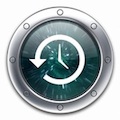Use Time Machine to backup to a networked Windows or Linux drive
![]()
Time Machine is a very convenient backup solution for Mac users, but typically requires an external drive to backup to. If you’ve got a network with an extra Windows or Linux PC hanging around with tons of disk space, you can get Time Machine to backup to that computers excess disk space instead of an external drive hooked to your Mac.
The first thing you’ll need to do is enable Time Machine to back up to network drives and unsupported volumes with this defaults command in OS X. After that, if you want to actively back up to a networked Windows drive or Linux computer, you’ll need to mount the remote network volume and choose it as the Time Machine destination.
 If you have never done those latter steps before, then our friends at lifehacker have a nice walkthrough detailing this process in full. If you follow the guide to finish, your Mac will automatically look for and mount a Windows or Linux shared drive and then back up to it using Time Machine. Check out the walkthrough on LifeHacker for more details.
If you have never done those latter steps before, then our friends at lifehacker have a nice walkthrough detailing this process in full. If you follow the guide to finish, your Mac will automatically look for and mount a Windows or Linux shared drive and then back up to it using Time Machine. Check out the walkthrough on LifeHacker for more details.
This is a great tip for anyone with a few PC’s hanging around.


Is that more secure?
Hmm your better to just use an external hard drive. As Time Machine isn’t supported when using it over a wireless network plus it will be mega slow.
Personally every week I just plug in my external hard drive and it does its thing.
I helped a Friend from me who bought a NAS wich is formatted as EXT3. Some Tipps:
Since Snowleopard there is a problem with the Rights, best way is to make the Login-Name and Password from the NAS-Drive and the Mac User the same because Time Machine makes problems. Also connect with the IP-Adress because if you “just” use .lokal there seems be also a problem. Also dont make the sparsebundle with terminal instead use the Disk-Utility with GUI and copy the .sparsebundle to the NAS from your Mac. Now it shuldt work.